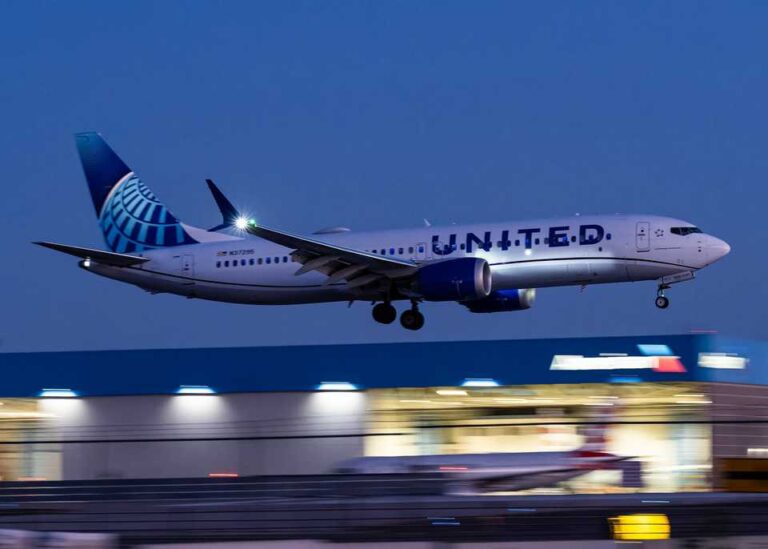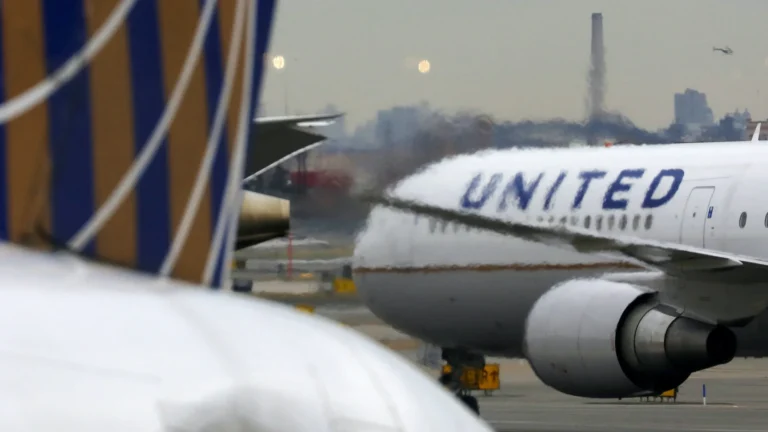United Airlines reports strong growth throughout 2Q24, expects more in 2024
United Airlines has posted a strong set of results for the second quarter of 2024 (2Q24), which demonstrate that the carrier is capitalizing on the strongest parts of its operation to boost its bottom line.
In 2Q24, the airline carried 44.3 million passengers, generating a total operating revenue of $15 billion, a pre-tax income of $1.74 billion, and a net income of $1.32 billion. When making a direct comparison with the same period in 2023, passenger numbers have increased by 5.8% overall, while total operating revenue rose by 5.7%, pre-tax income by 25.4%, and net income by 23.1%.
Breaking the numbers down further, domestic passengers accounted for $7.97 billion in revenues in 2Q24, while international passengers generated $5.71 billion, and cargo revenues $414 million. Other operating revenues contributed $892 million to the company’s figures for the period. In the earnings call held on July 17, 204, United predicted that strong growth across three of its primary revenue streams (premium economy, economy, and ‘road warriors’) would continue to grow and indeed accelerate throughout the remainder of 2024. The airline reported that, during 2Q24, premium revenue grew by 8.5% year-on-year and its economy revenue by an impressive 38%. Additionally, its market share among domestic road warriors has also increased YoY, according to the carrier.
The airline added that several US airlines are cutting back on capacity on loss-making routes. United has been planning its growth strategy around a forecasted adjustment within the US airline industry, leaving it in a strong position going forward as the US domestic market reconfigures itself. “United has long been preparing for the moment when industry-wide domestic capacity would adjust – it’s now clear that inflection point is just 30 days away,” said Scott Kirby, United’s CEO.
Kirby added that the carrier has also been actively managing its costs, cash situation, and capacity against what he described as a “challenging industry backdrop” as the company focuses on steps that are necessary to hit its financial targets for 2024.
United has reportedly been planning strategic capacity reductions in its domestic operations for around two years. The company revealed that its current published schedule comes as figures show a 3% downturn in the industry capacity growth rate.
At the end of June, United had a mixed fleet of 1,369 Boeing and Airbus aircraft, compared to 1,325 at the same point in 2023. During 2Q24, these planes flew an average stage length of 1,571 miles (2,513 km). The airline said that 1,134 million tons of aircraft fuel had been consumed, at an average cost of $2.76 per gallon. Meanwhile, its employee headcount had grown to 106,000, up 6% from the same point in 2023.
United Airlines has released an impressive set of financial results for the second quarter of 2024 (2Q24), showcasing the airline’s adeptness in leveraging its strengths to enhance its financial performance. This period has highlighted the airline’s strategic maneuvers and robust operational efficiency, positioning it as a formidable player in the aviation industry.
In 2Q24, United Airlines carried an impressive 44.3 million passengers, marking a significant milestone in its operational history. This achievement translated into a total operating revenue of $15 billion, underlining the airline’s capacity to generate substantial income from its core operations. The pre-tax income for this period stood at $1.74 billion, while the net income reached $1.32 billion. These figures reflect a considerable improvement compared to the same period in 2023, with passenger numbers increasing by 5.8%, total operating revenue by 5.7%, pre-tax income by 25.4%, and net income by 23.1%.
A deeper analysis of the revenue streams reveals interesting insights. Domestic passengers contributed $7.97 billion to the revenue in 2Q24, while international passengers added $5.71 billion. Cargo operations generated $414 million, and other operating revenues amounted to $892 million. This diversified revenue structure illustrates United’s ability to capitalize on multiple income streams, thereby enhancing its financial resilience.
During an earnings call held on July 17, 2024, United Airlines projected continued robust growth across its three primary revenue streams: premium economy, economy, and ‘road warriors’. The airline reported an 8.5% year-on-year growth in premium revenue and a remarkable 38% increase in economy revenue for 2Q24. This significant uptick in economy revenue highlights the airline’s success in attracting and retaining a larger customer base in this segment. Additionally, United has gained market share among domestic road warriors, indicating a strong position in the competitive domestic market.
United Airlines has also been strategic in its approach to capacity management. The airline noted that several US carriers are reducing capacity on unprofitable routes. In contrast, United has been preparing for an anticipated adjustment in the US airline industry’s capacity dynamics. Scott Kirby, United’s CEO, emphasized that the airline has been strategically planning for this moment of industry-wide domestic capacity adjustment, which he believes is imminent. This foresight places United in a favorable position as the US domestic market undergoes reconfiguration.
Kirby also highlighted United’s proactive measures in managing costs, cash flow, and capacity amidst a challenging industry environment. These steps are crucial for the airline to meet its financial targets for 2024. United’s strategic capacity reductions in its domestic operations, which have been in the pipeline for around two years, are part of its broader growth strategy. The airline’s current published schedule reflects a 3% decrease in the industry capacity growth rate, indicating a deliberate and calculated approach to capacity management.
At the end of June 2024, United Airlines operated a mixed fleet of 1,369 Boeing and Airbus aircraft, an increase from 1,325 at the same point in 2023. The average stage length of flights in 2Q24 was 1,571 miles (2,513 km), indicating the extensive range of United’s operations. The airline consumed 1,134 million tons of aircraft fuel at an average cost of $2.76 per gallon during this period. Moreover, United’s workforce grew to 106,000 employees, up 6% from the same point in 2023. This increase in headcount reflects the airline’s commitment to scaling its operations and supporting its growth trajectory.
United’s strategic focus on enhancing operational efficiency, diversifying revenue streams, and managing capacity effectively has yielded positive results. The airline’s ability to navigate the complexities of the aviation industry, while simultaneously growing its market share and revenue, underscores its robust operational framework and strategic foresight.
Looking ahead, United Airlines is poised to continue its upward trajectory. The airline’s emphasis on premium economy, economy, and road warriors segments aligns with broader industry trends and consumer preferences. The projected growth in these segments is expected to further bolster United’s revenue streams and enhance its competitive position.
Furthermore, United’s strategic capacity reductions and proactive cost management are likely to yield long-term benefits. As the US domestic market adjusts and reconfigures, United’s preparedness and strategic positioning will enable it to capitalize on emerging opportunities and mitigate potential risks.
United Airlines’ 2Q24 financial results reflect a well-executed strategy and robust operational performance. The airline’s ability to generate substantial revenue, increase passenger






